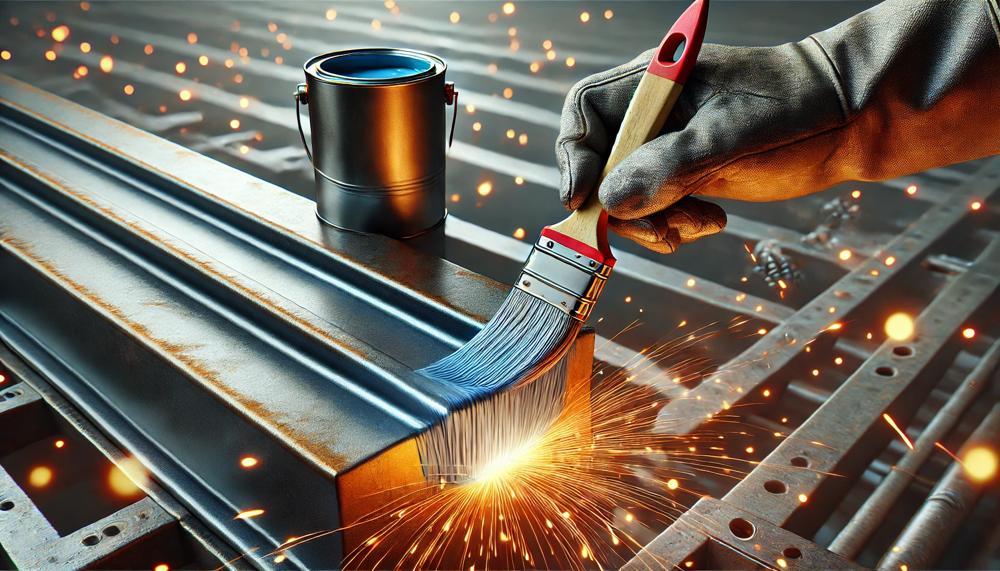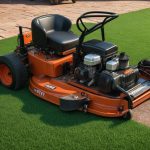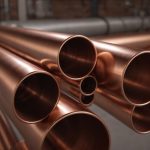In the realm of metal fabrication and construction, one of the pivotal decisions that can significantly impact both the durability and aesthetics of a project involves the timing of painting steel—should this critical process occur before or after welding? This seemingly simple question harbors a complex array of considerations, blending science, technique, and practical wisdom.
Our journey through this discussion will not only demystify the technicalities but also sprinkle in expert insights, ensuring a captivating read whether you’re a seasoned professional or a curious newcomer. Here’s what we’ll unpack:
- The Science Behind Paint and Weld: Understanding the chemical and physical interactions at play.
- Pros and Cons: Weighing the advantages and disadvantages of both approaches.
- Expert Recommendations: Drawing from the well of professional experience and standards.
- Practical Tips for Implementation: Ensuring you have the know-how to apply these insights effectively.
By bridging the gap between casual interest and professional expertise, we aim to provide a comprehensive overview that enlightens, educates, and engages. Whether you’re looking to refine your craft or simply satisfy a burst of curiosity, you’re in the right place. Let’s dive into the nuanced world of steel, paint, and the art of welding, exploring why the timing of these processes is not just a matter of preference but a strategic decision that can define the success of your project.
Contents
- 1 How to Paint Steel After Welding
- 2 Surface Preparation: Cleaning The Steel
- 3 Rust Prevention: Applying A Rust-Inhibitive Primer
- 4 Paint Removal: Dealing With Loose Or Peeling Paint
- 5 Rust Removal: Cleaning Off And Treating Rust
- 6 Repairing Holes And Dents: Preparing The Surface
- 7 Priming The Steel: Choosing The Right Primer
- 8 Rust Prevention: Applying A Rust-Inhibitive Primer
- 9 Paint Removal: Dealing With Loose Or Peeling Paint
- 10 Rust Removal: Cleaning Off And Treating Rust
- 11 Repairing Holes And Dents: Preparing The Surface
- 12 Priming The Steel: Choosing The Right Primer
- 13 Conclusion
How to Paint Steel After Welding
To ensure a solid and enduring finish when painting steel after welding, follow these meticulously outlined steps:
| Step | Process | Tips and Considerations |
| Surface Cleaning | Use mineral spirits to cleanse the surface of any grease or contaminants. | Ensure the area is thoroughly dry before proceeding to the next step. |
| Dealing with Rust | For rusty areas, remove loose rust with wire brushing, sanding, or scraping. Apply a rust-inhibitive primer. | A rust converter can be used for severe cases before priming. |
| Repair Work | Sand small holes or dents, wipe clean with a degreaser, and fill with an epoxy-based composite or filler if necessary. | Ensure repairs are smooth and flush with the surrounding surface. |
| Priming | Choose a suitable metal primer, avoiding water-based options. Apply immediately after cleaning and repair work. | Consider the environment; some primers are specifically designed for outdoor use or in humid conditions. |
| Painting | After the primer has dried completely, apply your chosen paint using a spray gun for even coverage. | Pick a paint that’s compatible with your primer and intended for use on metal surfaces. |
| Weather Considerations | If painting outdoors, monitor weather conditions to ensure optimal application and drying times. | Avoid painting in extreme temperatures or high humidity if possible. |
Remember, prepping the surface by removing mill scale and ensuring it’s free from contaminants is crucial for paint adherence. Galvanization can offer additional rust protection but may require specific types of primer or paint.
Always prioritize safety by working in well-ventilated areas and wearing appropriate protective gear. The choice between spray painting and brush application depends on your preference, but spraying usually achieves a more uniform finish without brush marks.
Surface Preparation: Cleaning The Steel
Properly cleaning steel before welding is paramount to ensure the integrity and quality of the weld. Various methods can be employed to achieve a clean surface, each with its unique advantages. The choice of cleaning method not only impacts the welding process but also influences the decision on whether to apply paint before or after welding.
Below is a detailed analysis of common cleaning methods and their implications for painting.
| Cleaning Method | Description | Implications for Painting |
|---|---|---|
| Degreasing | Removes oil, grease, and other hydrocarbon contaminants through chemical agents or solvents. | Essential for both pre- and post-weld painting to prevent adhesion issues. |
| Grinding | Utilizes abrasive tools to mechanically remove surface defects, rust, and mill scale. | Creates a smooth surface ideal for painting post-weld, enhancing finish quality. |
| Sandblasting | Employs high-velocity sand particles to clean the steel surface thoroughly. | Ensures an even and contaminant-free surface, suitable for both pre- and post-weld painting. |
Choosing whether to paint before or after welding hinges on several factors. Painting prior to welding can shield the bare metal from corrosion during the welding process, especially in humid environments. However, this approach requires careful masking of the weld zones to avoid contamination and ensure good weld quality. On the flip side, opting to paint after welding offers a cleaner, more uniform finish. It allows for any post-weld clean-up or repairs to be made before applying primer and paint, ensuring better adhesion and a visually appealing result.
It’s crucial to note that regardless of when painting occurs, the steel must be meticulously cleaned and prepped. Skipping this step can lead to poor paint adhesion, accelerated corrosion, or even welding defects. Therefore, investing time in cleaning the steel thoroughly pays off in the longevity and appearance of your welding project.
Rust Prevention: Applying A Rust-Inhibitive Primer
The purpose of slathering a rust-inhibitive primer before diving into the welding of steel is akin to setting up a shield against the relentless siege of rust. This clever concoction, primarily composed of zinc phosphate, plays the role of a stalwart guardian against rust by tackling the very elements that give birth to it – oxygen and moisture. Here’s the nitty-gritty on how this primer works its magic to keep rust at bay:
| Element | Action | Result |
| Zinc Phosphate | Binds with metal surface | Forms a protective barrier |
| Barrier Formation | Blocks oxygen and moisture | Prevents rust formation |
| Durability Enhancement | Improves adherence of subsequent coatings | Extends lifespan of metal surface |
In the grand scheme of welding, where steel is exposed and vulnerable, applying a rust-inhibitive primer is like sending in the cavalry before the battle even begins. It’s not just about fighting off rust; it’s about fortifying the steel’s surface, ensuring that whatever comes next – be it paint or further treatments – holds up stronger and lasts longer.
Reflecting on our previous discussion about cleaning steel before welding, it’s clear that preparation is half the battle won. The application of a rust-inhibitive primer is a critical step that follows suit. By laying down this protective layer, one effectively seals off the realms where oxygen and moisture might creep in to conjure rust.
Paint Removal: Dealing With Loose Or Peeling Paint
When it comes to welding on steel surfaces, encountering loose or peeling paint isn’t just a minor hiccup; it’s a hurdle that requires immediate attention. Before diving into the hows and whys of addressing this issue, let’s shed light on the common culprits behind this unwelcome phenomenon and the strategies for tackling them effectively, be it before or after welding.
| Cause | Why It Happens | How to Address It |
| Moisture Intrusion | Water finds its way beneath the paint layer, compromising adhesion and leading to peeling. | Identify and eliminate sources of moisture. Use waterproof primers or coatings designed for metal surfaces. |
| Poor Adhesion | Initially poor surface preparation or applying paint on a rusty surface without proper treatment. | Remove loose paint, treat rust, and properly prepare the surface before repainting. |
| Age and Weathering | Over time, exposure to elements causes paint to lose elasticity and adhere poorly. | Regular maintenance checks. When necessary, remove old paint and apply a fresh coat using high-quality products. |
| Improper Painting Conditions | Applying paint in too hot, cold, or humid conditions affects drying and adhesion. | Paint under recommended conditions and follow manufacturer guidelines for temperature and humidity. |
Addressing these issues requires a keen eye and a steady hand. Whether you’re prepping for welding or dealing with post-welding paint woes, here’s the drill:
- Before Welding: The key lies in meticulous surface preparation. Strip away any loose or peeling paint with a scraper or wire brush, taking care not to gouge the metal. For a thorough job, consider sandblasting (but mind your safety gear). Applying a rust-inhibitive primer as mentioned earlier is like donning your steel surface with an invisible cloak of protection against rust.
- After Welding: Post-welding clean-up might reveal paint damage around welds due to high heat. Here again, remove compromised paint carefully. Treat any new rust spots that formed during welding, prime with a suitable primer, and repaint for a seamless finish.
Remember, patience is your ally. Rushing through prep work only sets you up for déjà vu down the line. Quality materials are your best mates – they might dent your wallet initially but think of them as an investment rather than an expense. After all, good work ain’t cheap, and cheap work ain’t good.
Rust Removal: Cleaning Off And Treating Rust
To ensure a successful and long-lasting paint job on steel, especially before or after welding, it’s critical to tackle the rust head-on. Here’s a distilled guide on how to clean off and treat rust, tailored for those knee-deep in the world of welding.
The Essentials
| Method | Application | Best For |
| White Vinegar Soak | Immerse or apply with aluminium foil. | Small parts or light rust. |
| Lemon/Lime and Salt | Apply juice and salt, leave, then scrub. | Non-abrasive rust removal on small areas. |
| Baking Soda Paste | Apply paste, leave, then scrub off. | Sensitive surfaces needing gentle treatment. |
| Potato and Dish Soap | Halve a potato, dip in soap, rub on rust. | Eco-friendly option for small rust spots. |
| Oxalic Acid | Apply with care, wearing protective gear. | Tough, stubborn rust on durable materials. |
| Abrasive Tools (e.g., Sandpaper) | Sand away the rust physically. | Pre-welding prep or heavy-duty clean-up. |
Digging Deeper
- Chemical Reactions: Vinegar and lemon/lime methods rely on acid to chemically break down rust. These are fantastic for items that can be soaked or for surfaces where minimal abrasiveness is required. Baking soda acts as a mild abrasive and neutralizes the rust in the process.
- Mechanical Removal: For welders, nothing beats getting down to fresh metal like a good session with sandpaper or a wire brush. This method is straightforward but requires elbow grease and patience. Post mechanical removal, applying a rust converter can prevent recurrence by turning rust into a paintable surface, ensuring your welding efforts aren’t in vain.
- Safety First: When using harsh chemicals like oxalic acid or commercial rust removers, don’t skimp on safety gear. Gloves and goggles aren’t just accessories; they’re necessities.
Aftercare:
Once you’ve banished the rust, treating the metal to prevent its return is crucial. A primer designed for metal surfaces offers an additional layer of protection.
Opting for a rust-inhibiting primer before painting ensures that your hard work lasts longer under scrutiny.
Repairing Holes And Dents: Preparing The Surface
Preparing the surface of steel before welding and painting is akin to laying down a strong foundation for a house; it’s pivotal for ensuring the longevity and durability of your work.
Here’s a step-by-step guide, broken down into nitty-gritty details, to get that steel prepped up and ready to go:
| Step 1: Degrease | Use a degreasing solvent or detergent | Ensures removal of oils, dirt, or debris. |
| Step 2: Rust and Scale Removal | Employ a wire brush or sandpaper | Clears off any rust or mill scale from the surface. |
| Step 3: Rinse and Dry | Rinse with clean water | Surface must be completely dry before proceeding. |
| Step 4: Prime | Apply a metal primer | Creates a smooth base for paint adherence. |
| Step 5: Paint Application | Apply multiple thin coats of paint | Use high-quality, heat-resistant paint; allow each coat to dry fully. |
| Step 6: Curing Time | Let the paint cure | Allow at least 24 hours before stress or handling. |
The process starts with a thorough clean-up using a degreasing solvent to strip away any unwelcome grease, dirt, or debris. This step cannot be overlooked as it ensures that nothing interferes with the adhesion process. Next, it’s time to show rust and mill scale the door by employing a wire brush or sandpaper. This not only cleans but also roughens up the surface for better primer adherence.
Following the cleanup, a good rinse with clean water is necessary. It’s crucial to wait until the surface is bone dry before moving on to avoid trapping moisture. Then, lay down a metal primer to smoothen out the surface, ensuring the paint sticks well and stands the test of time.
When it comes to painting, patience is key. Apply multiple thin layers of high-quality, heat-resistant paint, ensuring each has dried thoroughly before adding another. This step is vital for welding areas to prevent damage during the process.
Priming The Steel: Choosing The Right Primer
Choosing the right primer for steel, whether before or after welding, is no small feat. It’s a decision that can impact the longevity, durability, and appearance of your project. So, let’s dive into the nitty-gritty and make sure you’re armed with the knowledge to pick the perfect primer.
| Factor | Consideration | Why It Matters |
|---|---|---|
| Type of Paint | Pre-vs-Post Welding Application | Different paints excel at different stages; knowing when to apply is key for adhesion and protection. |
| Welding Method | MIG/TIG vs Stick Welding | Stick welding’s heat can compromise paint integrity, guiding the choice of welding method and paint application timing. |
| Steel Condition | Cleanliness and Rust Presence | A clean, rust-free surface ensures paint sticks well and lasts longer, mandating prior preparation. |
| Intended Use and Environment | Indoor vs Outdoor | Exposure to elements dictates the need for more robust paints post-welding for ultimate protection. |
| Surface Preparation | Cleaning and Priming Needs | Proper prep removes contaminants that hinder paint adhesion, laying the groundwork for a durable finish. |
| Heat Resistance | Tolerance to Welding Temperatures | Selecting a primer that withstands welding heat prevents damage during the process, maintaining integrity. |
| Cooling Time | Post-Welding Paint Application Timing | Allowing welds to cool completely before painting avoids finish imperfections like bubbling or cracking. |
Digging deeper, it’s vital to match the primer with the specifics of your project. For instance, if you’re working on an outdoor structure that’ll brave all weathers, opting for a primer that boasts excellent corrosion resistance and can be applied post-welding makes sense. This ensures it fully benefits from its protective qualities.
On the flip side, for interior projects less prone to harsh conditions, you might lean towards priming beforehand. This approach allows for a smoother workflow and potentially less cleanup post-welding, provided your selected primer can take the heat.
Remember, the devil’s in the details. A poorly chosen primer can lead to a world of issues down the line – from peeling paint to rust invasion. So take your time, consider your project from all angles, and choose wisely.
Rust Prevention: Applying A Rust-Inhibitive Primer
Applying a rust-inhibitive primer to steel, whether before or after welding, is akin to setting the stage for a performance where durability and resilience are the stars of the show. It’s not just about preventing the inevitable march of rust; it’s about empowering steel to endure, to stand tall against the elements and time itself.
| Benefit | Explanation | Impact |
| Protection Against Corrosion | A rust-inhibitive primer acts as a shield, keeping corrosive elements at bay. | Steel structures maintain their integrity longer, braving the elements with fortitude. |
| Improved Adhesion | This type of primer ensures that subsequent coatings cling better to the steel surface. | Paints and coatings look better and last longer, safeguarding the metal beneath. |
| Enhanced Durability | The added layer amplifies the steel’s ability to withstand wear and tear. | Structures stand unyielding, defying age and wear with grace. |
| Prevention of Defects | Rust-inhibitive primers help in keeping weld porosity and other defects at bay. | Welds are cleaner, stronger, and more consistent, leading to safer, more reliable constructions. |
| Cost Savings | By guarding against corrosion, the need for repairs or replacements diminishes. | Over time, the initial investment in a quality primer pays off manifold in savings. |
| Time Efficiency | Acting as a pre-treatment, these primers streamline the welding process. | Projects progress faster, without sacrificing quality or safety. |
In essence, choosing to apply a rust-inhibitive primer is not just about adhering to best practices; it’s about respect for the craft of welding and an investment in longevity. Whether it’s before laying down that first weld or after the final pass, this step ensures that your work remains steadfast, come rain or shine.
Paint Removal: Dealing With Loose Or Peeling Paint
Removing loose or peeling paint from steel, especially in the realm of welding, demands precision and safety to ensure the integrity of the material is maintained. Whether you’re dealing with a fresh weld or prepping steel for welding, here’s a straightforward guide tailored for welders looking to tackle this task effectively.
Understanding the Type of Paint
First off, identify whether the paint is oil-based or water-based. This can be swiftly determined with a dab of rubbing alcohol on a cloth; if the paint wipes away, it’s water-based. If not, you’re dealing with oil-based paint.
Methods for Removal
| Method | Best For | Precautions |
|---|---|---|
| Mechanical (Scraping/Sanding) | Water-based paint; Pre-weld prep | Wear protective gear to avoid inhalation of dust. |
| Chemical Strippers | Oil-based paint | Utilise gloves, goggles, and a respirator to shield against harmful chemicals. |
| Heat Guns | Small areas/Details | Avoid excessive heat to prevent steel damage; beware of toxic fumes. |
| Sandblasting | Broad areas; Professional settings | Should only be executed by trained professionals due to risk. |

Practical Tips
- Preparation: Before diving into paint removal, ensure the area is well-ventilated and you’re donned in appropriate safety gear. This isn’t just about getting rid of paint; it’s about keeping you safe.
- Technique Matters: When scraping or sanding, go gently. You’re not just wrestling with paint but preserving the integrity of the steel beneath.
- Chemical Caution: If opting for chemical strippers, apply them meticulously and always adhere to the manufacturer’s instructions. A little patience here goes a long way towards efficiency and safety.
- Heat Gun Handling: Keep the gun moving to avoid overheating any spot. Think of it as evenly roasting a marshmallow, not charring it into oblivion.
- Sandblasting Sensibility: This method is a sledgehammer when you might need a scalpel. It’s powerful and efficient but should be your last resort due to its aggressive nature.
Rust Removal: Cleaning Off And Treating Rust
Cleaning rust off steel before welding is paramount for a top-notch weld. Here’s a glance at the methods and the painting conundrum, sorted out for clarity.
Recommended Methods for Rust Removal
| Method | Application | Notes |
| Wire Brushing | Surface Rust | Manual or power brushes can be used. Ideal for light rust. |
| Sanding | Surface to Medium Rust | Manual sanding or using a sander for larger areas. Provides a smooth finish. |
| Grinding | Heavy Rust/Corrosion | Power tools required. Use with caution to avoid damaging the steel. |
| Degreasing | Post-Mechanical Cleaning | Solvent cleaners to remove oil/grease. Essential for weld purity. |
Painting Before or After Welding?
The timing of painting in relation to welding hinges on various factors, including the paint type and welding method. Here’s a quick rundown:
- Paint Before Welding: Best suited if the paint can withstand high heat without degrading. Offers an additional layer of protection against environmental factors but requires careful surface prep.
- Paint After Welding: Allows for thorough inspection of the weld and accommodates a broader range of paint types. Generally recommended, especially with oil-based paints which may not fare well under high heat conditions.
Repairing Holes And Dents: Preparing The Surface
To ensure the steel’s surface is impeccably prepped for painting, whether before or after welding, follow this streamlined guide.
| Step | Action | Details |
|---|---|---|
| 1 | Surface Cleaning | Initiate by scrubbing off any grime, oil, or dirt using a degreaser or solvent. This action ensures the paint adheres properly. |
| 2 | Rust and Scale Removal | Employ wire brushes, sanding, or grinding to banish rust and scale. It’s about getting back to the bare metal for optimal painting conditions. |
| 3 | Smoothing the Surface | Post-cleaning, smooth out any roughness with sandpaper or a grinding tool, especially around weld areas if painting post-welding. |
| 4 | Dust Removal | After smoothing, wipe down with a clean cloth or use compressed air to remove all residual dust and debris. |
| 5 | Primer Application | Apply a heat-resistant primer suited to your paint type. This step is crucial for both pre and post-weld painting to secure adhesion and durability. |
| 6 | Paint Selection and Application | Pick a paint that can withstand high temperatures if painting before welding. Apply in multiple thin layers rather than one thick layer for an even finish. |
| 7 | Curing and Drying Time | Allow ample time for the paint to dry and cure completely before using the steel. Patience during this stage ensures a long-lasting finish. |
Following these steps diligently will prepare your steel surface ideally for painting, ensuring protection against elements and enhancing its longevity.
Whether you decide to paint before welding (keeping in mind the need for heat-resistant paint) or after (ensuring welds are completely cooled), these steps will lead to a smooth and professional finish.
Priming The Steel: Choosing The Right Primer
When selecting the right primer for steel, particularly in the context of welding, it’s crucial to weigh up a handful of pivotal factors. The aim? To ensure your steel doesn’t just look the part but also holds up against whatever throws its way – be it the hands of time or the harshness of the environment. Let’s break it down:
| Factor | Why It Matters | Considerations |
| Cost Efficiency | Keeps your project within budget without compromising quality. | Balance between price and performance; cheaper isn’t always better. |
| Surface Preparation | A direct impact on primer adherence and overall finish quality. | Cleaning, rust removal, smoothing, and dusting are non-negotiable steps. |
| Service Environment | Determines the primer’s resilience against specific conditions. | Consider humidity, temperature fluctuations, and chemical exposures. |
| Expected Service Lifetime | Primer choice can extend or reduce the maintenance cycle. | Opt for durability in high-wear situations to save time and money long-term. |
| Type of Metal | Not all primers are suited for every metal type; compatibility is key. | Steel-specific primers are designed to bond tightly and prevent corrosion. |
| Aesthetic Preferences | The primer can influence the finish’s appearance and texture. | Select a primer that supports your desired aesthetic outcome. |
| Performance Requirements | The primer must meet the functional demands of the application. | Evaluate needs such as corrosion resistance, weldability, and paint adhesion. |
| Environmental Factors | Some primers offer better protection in certain environmental conditions. | Look for primers with specific attributes like UV resistance or low VOCs for indoor use. |
Pinpointing the ideal primer for steel before or after welding ain’t a walk in the park.
Yet, with a sharp eye on these factors, you’re setting yourself – and your project – up for success. Remember, the devil’s in the details. So, don’t rush.
Conclusion
To make something better out of metal, where steel meets the hot hug of welding, the decision of whether to paint before or after this union is not just a step, but a jump. This piece has gone through a lot of different things to think about, from the chemistry of how paint and welding affect each other to the useful tips that experienced professionals can give. It has shown a way that combines science and art.
The complex and specific decision suggests that painting after welding often results in a more lasting and attractive finish, as long as the surface is properly prepared and the painter knows a lot about the materials used. Having said that, it’s clear that each job may need a different method.
This isn’t just about adding color; it’s also about protecting and improving steel’s strength against the steady march of time. Putting down levels of care, planning, and skill are just as important as primer and paint. As an example, a rust-inhibitive base protects against rust, and a perfectly clean surface makes sure that the paint sticks perfectly. Each step is a work of art.
Remember that when you decide to paint in your welding job, it’s not just a technical choice; it’s also a strategic one. How and when you paint can affect how long it lasts and how beautiful it looks, just like how heroes prepare their armor for war or artists prime their canvas.





